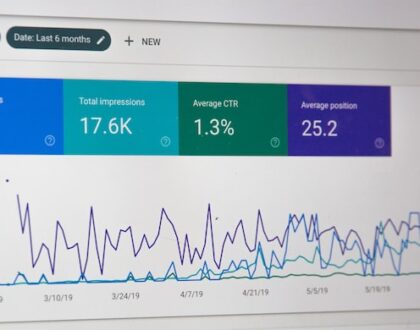Work from home consumer trends: home shopping and beyond

by local
Work from home consumer trends: home shopping and beyond
After more than two years of the COVID pandemic, it’s safe to assume that the work-from-home (WFH) trend is here to stay. The rise of the home-based worker affects not only workplaces but also consumption patterns.
We evaluated data from approximately 49,600 global survey respondents, about a fifth of whom said they worked primarily from home between April and December 2021, to better understand how this new set of customers varies from non-WFH consumers. When combined with our new Shopper Story research, which examined the findings of numerous polls from over 17,000 respondents worldwide and unpacked commerce data from our 22,000 advertiser clients worldwide, we get a unique and holistic insight into the WFH consumer in 2022.
Here’s what you should know about this new and strong demographic:
A quarter or more of all global workers work largely from home.
Home workers accounted for around one-fifth (19%) of global customers in the fourth quarter of 2021. In the United States, 22% of respondents identified as home workers, while more than a quarter (26%) of respondents in the United Kingdom worked primarily from home. Although our most recent survey wave was conducted between December 2 and 9, when the Omicron version was already making headlines, it did not show a significant increase in the share of global workers working from home.
WFHers around the world have a distinct demographic profiles.
According to survey results, the work from home group is slightly younger (-1.2 years on average). Millennials account for 38% of all WFHers (compared to 35% of the rest of the population), making individuals aged 25 to 38 the dominant component of the global WFH workforce.
WFHers are 2.3 years younger than non-WFHers in the United States, and Millennials make up 43% of the total (vs. 34% for non-WFHers). Millennials account for 38% of the WFH group in the United Kingdom.
According to global studies, 19% of women work from home, and 51% of persons who work from home have children (compared to 46% of non WFHers). In the United States and the United Kingdom, men are more likely to work from home than women: more than a quarter of men (26% in the US and 28% in the UK) are WFHers, compared to around a fifth of women (21% in the US and 23% in the UK). More American WFHers have children at home (61% vs. 46% for others).
Marketers should enhance their targeting and messaging for this demographic by understanding that the work from home group is slightly younger, male, and likely to have children.
WFHers have higher spending power and spend more on discretionary products.
Because of the different currencies, finding a global trend is challenging, but our data reveals that the purchasing power of the work from home group is much above average in both the US and the UK.
Two-thirds of American WFHers (67%) reside in households earning at least $50,000 per year, compared to 52% of buyers who do not work from home.
In the United Kingdom, 62% of home workers live in households earning at least £38,000 per year, compared to 44% of the non-WFH population.
Higher-income consumers, as expected, spend more on discretionary items. Because this group spends more time at home than others, they buy more video games and household appliances than the non-work from home group.
Globally, WFHers purchased more cosmetics (43% vs 40%), books & movies (37% vs 33%), home appliances (28% vs 24%), consumer electronics (27% vs 24%), and video games (28% vs 24%).
American WFHers purchased more alcohol (53% of WFHers purchased some in the previous month, compared to 49% of non-WFHers), cosmetics (41% vs. 37%), and cultural products (32% vs. 27%). Those who worked from home in the United Kingdom purchased more alcohol (62% versus 59% on average), home appliances (26% versus 21%), and books and movies (31% versus 28%).
Clearly, the WFH audience is a highly valued one, and one that is willing to spend more money on home, beauty, and entertainment than those who do not work from home. This knowledge, together with the demographic profile described above, provides marketers with a strong direction for engaging work from home consumers.
WFHers are also at the forefront of novel delivery strategies.
More than six out of ten (62%) WFHers worldwide have purchased online and picked up the merchandise inside a store (compared to 52% of non-WFHers), and 44% have picked up goods purchased online on the curbside or parking lot of a store (compared to 37% of non-WFHers).
This ratio is even higher in the United States, where more than seven out of ten (71%) WFHers have purchased online and picked up the merchandise inside a store (compared to only 59% of non-WFHers), and nearly seven out of ten (68%) have picked up goods purchased online on the curbside or parking lot of a store (compared to 61% of non-WFHers).
Based on this data, integrating the availability of BOPIS and curbside pickup in ad messaging can be a key technique for interacting with this group.
Everyone is excited to go out there, WFH or not.
Those who work from home have distinct buying habits, but when it comes to finally put our social lives back on track, everyone is on the same page. According to our Shopper Story research, more than one-third of survey respondents expect to have more reasons to get dressed up in 2022, such as weddings and parties, than they did in 2021. Approximately half (49%) intend to spend more time with friends.
Consumers are loading up on look-good, feel-good things to prepare for more real-world excursions. In the United States, sales of party-ready items such as dance dresses and jewelry increased greatly this summer, and sales of beauty and wellness products such as perfume & cologne and shaving cream increased significantly this fall.
Engage WFHers in commerce media.
The findings described here reveal that the work from home audience is still shopping for their new at-home lifestyle, but they’re also ready to get out into the world, and they’re sophisticated when it comes to new ways to purchase and pick up items.
Marketers may use commerce media to study audiences like this and approach them throughout the open internet with products in the categories and price points that they’re most likely to be interested in.
Recommended Posts

Can Attentiveness Actually Drive Campaign Success?
November 8, 2024

Maximizing Revenue Growth Through Sales and Marketing Alignment
October 11, 2024

The FTC’s Position on Hashing Should Wake Up Internet Advertisers
September 2, 2024
